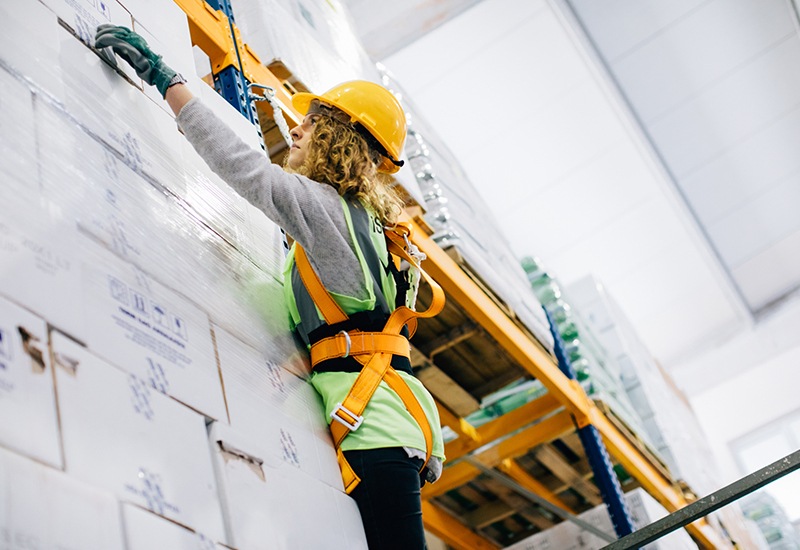£90k Fine For Meat Producer Highlights Cost of Uncontrolled Work at Height

The All Party Parliamentary Group (APPG) for Working at Height has just closed the evidence-gathering stage of the UK’s first ever inquiry into the number of serious injuries and fatalities resulting from falls from height and falling objects in the UK workplace.
With 18% of those who died at work in 2016/17 killed due to a fall from height, this case serves as an important reminder that such incidents are not restricted to the construction industry.
Background
An employee at meat production company York House Meat Products was instructed to adjust the height of shelves on some storage racking with the help of co-workers.
The workers climbed onto one of the lower crossbars of the racking to enable them to reposition the top shelves.
When the crossbar gave way beneath them one of the workers fell, hitting his head on the racking before landing on the floor. The dislodged crossbar then fell 3.2m and hit the employee on the back of the head and shoulders.
The injured individual suffered soft tissue damage to his right shoulder and required physiotherapy for several months, and he was also unable to work for two months.
Employees unaware of dangers of working at height
The HSE investigation into the incident found the company had failed to adequately manage the risks associated with working at height. Employees were not aware of the dangers associated with climbing storage racking and no safe system of work was in place.
The employer pleaded guilty to breaching Regulation 4(1) of the Work at Height Regulations 2005, and the company was fined £90,000 and ordered to pay £20,567 in costs.
Speaking after the hearing, HSE inspector Emma Page said:
“This incident could have been prevented had York House Meat Products provided a risk assessment or a safe system of work for the task in hand. Employees should be made aware of the risks associated with climbing storage racking.”
What the law requires for safely working at height
Regulation 4 of the Work at Height Regulations 2005 states:
- Every employer shall ensure that work at height is—
(a) properly planned;
(b) appropriately supervised; and
(c) carried out in a manner which is so far as is reasonably practicable safe, and that its planning includes the selection of work equipment in accordance with regulation 7
- Reference in paragraph (1) to planning of work includes planning for emergencies and rescue
- Every employer shall ensure that work at height is carried out only when the weather conditions do not jeopardise the health or safety of persons involved in the work
- Paragraph (3) shall not apply where members of the police, fire, ambulance or other emergency services are acting in an emergency
There is a clear expectation that work at height is planned and safe, and climbing on racking – as in this case – is clearly not a recognised safe system of work.
What is best practice for safely working at height
In this instance staff should not have been adjusting the elevations of racking beams, as changes in the profile can affect the safe working load of a racking system.
This can result in a failure of the racking, leading to damaged stock equipment and potentially serious injury to those in the vicinity at the time of the collapse.
Racking systems should be designed, inspected and maintained/adjusted by properly trained individuals who have received proper training, such as that provided by the Storage Equipment Manufacturers Association (SEMA).
The hierarchy of controls for work at height should then be applied – firstly, that if possible work at height should be avoided. When constructing or adjusting racking this is not usually achievable, so the regulations then require a suitable risk assessment and selection of appropriate access equipment/working platforms to complete the work.
Mobile Elevated Work Platforms or podium steps would be examples of suitable access equipment for this type of activity.
In an emergency, HSE guidance PM28 for ‘Working Platforms (non-integrated) on forklift trucks’ details the safe use of fork lift platforms, but it is clear that they are only suitable for short-term, unplanned work, and require a number of mast controls on the forklift to be isolated.
Further advice and support for Moorepay customers
Guidance notes on work at height and selection of access equipment can be found on the HR Hub, or you can discuss your particular situation by calling the advice line on 0845 073 0240.


